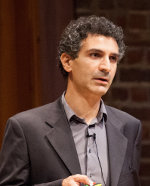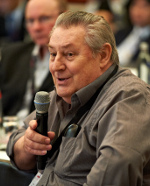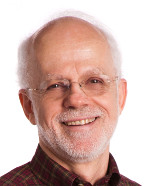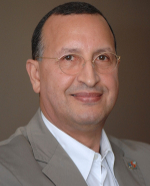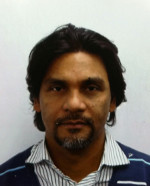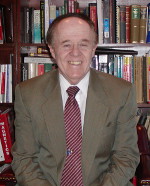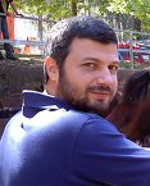IEEE IoT Newsletter - January 2015
Smart Cities and Quality of Life: Urbanization Underscores the Value of Internet of Things Applications
Chung-Sheng Li
More people live in cities today than at any time in human history, and the urbanization of the global population appears set to continue as the 21st century unfolds.
The multi-faceted pressures of urbanization will force cities to develop efficiencies and strategies in order to remain viable. Smarter ways of doing everything better, with fewer resources, will be required. So will the ability to forecast disruptive events such as natural disasters and their effect on urban dwellers and the infrastructure that supports them.
The Hardware Enablers for the Internet of Things - Part I
Timothy Lee
The premise of the Internet of Things (IoT) is that this new technology trend will connect billions of devices using the internet starting around 2020, with ecosystems that will address wearables, smart home, automotive, smart cities, the workspace and industrial applications. The IoT system consists of three domains: Sensors, Connectivity and Applications. Most attention for IoT has been focused on the applications for the home (consumer), transport (mobility), health (body), buildings (infrastructure), factory (industrial) and cities (utilities, security). What is missing from much of the discussion are the underlying hardware and sensor technologies that enables the IoT applications, intelligence and links to the 'cloud'.
Towards a Practical Architecture for Internet of Things: An India-centric View
Prasant Misra, Yogesh Simmhan and Jay Warrior
The current, widespread thinking on the Internet of Things (IoT) makes several (arguably misplaced) assumptions. IoT architectures are often a repackaging of existing ideas or a clean-slate, costly design. Some of these design assumptions include hundreds of tightly coupled devices; costly devices ($5 - $500) customized for an application; exclusive use of well-structured, always-on communication networks (e.g., IPv6); centralized data collection, analysis and control in the cloud; and a single vendor who owns the vertical application: platform, cloud services, data and ecosystem. Examples of these vertically integrated silos include smart power grids, supervisory control and data acquisition (SCADA) systems, and personal monitoring devices like FitBit.
RELYonIT: Dependability for the Internet of Things
Carlo Alberto Boano, Kay Römer and Thiemo Voigt
The Internet of Things will represent the backbone of modern society and will embrace a system of wireless networks delivering end users a plethora of attractive services and applications. The latter will rely heavily on the dependable operation of embedded wireless sensors and actuators despite their low-priced hardware, battery limitations, and resource constraints. Wireless systems employed, for example, to build smart cities, smart grids, and smart healthcare applications, represent a long-term investment and are therefore required to reliably convey information about the state of things and places, as well as to remain available for a prolonged time.
This Month's Contributors
Chung-Sheng Li is currently the director of the Commercial Systems Department. He has been with IBM T.J. Watson Research Center since May 1990.
Read More >>
Timothy Lee is the 2015 IEEE Microwave Theory and Techniques Society (MTT-S) President.
Read More >>
Prasant Misra is senior member, technical staff at the Robert Bosch Centre for Cyber Physical Systems in the Indian Institute of Science, Bangalore.
Read More >>
Yogesh Simmhan is an Assistant Professor at the Supercomputer Education and Research Centre at the Indian Institute of Science, Bangalore.
Read More >>
Jay Warrior has over 20 years of experience creating new, high technology based, business opportunities for Agilent Technologies, Hewlett-Packard, Fisher-Rosemount, and Honeywell in the US and in Asia.
Read More >>
Carlo Alberto Boano (IEEE member since 2009) has been a research assistant at the Institute for Technical Informatics of TU Graz, Austria since September 2013.
Read More >>
Kay Römer is currently a Professor and head of the Institute for Technical Informatics at TU Graz.
Read More >>
Thiemo Voigt leads the Networked Embedded Systems Group at SICS Swedish ICT, formerly Swedish Institute of Computer Science.
Read More >>
Contributions Welcomed
Click Here for Author's Guidelines >>
Would you like more information? Have any questions? Please contact:
Raffaele Giaffreda, Editor-in-Chief
raffaele.giaffreda@create-net.org
Stuart Sharrock, Managing Editor
stuartsharrock@ieee.org
About the IoT eNewsletter
The IEEE Internet of Things (IoT) eNewsletter is a bi-monthly online publication that features practical and timely technical information and forward-looking commentary on IoT developments and deployments around the world. Designed to bring clarity to global IoT-related activities and developments and foster greater understanding and collaboration between diverse stakeholders, the IEEE IoT eNewsletter provides a broad view by bringing together diverse experts, thought leaders, and decision-makers to exchange information and discuss IoT-related issues.
IEEE IoT Newsletter Editorial Board
Sign Up for IoT Technical Community Updates
Calendar of Events
IEEE 8th World Forum on Internet of Things (WF-IoT) 2022
26 October-11 November 2022
Call for Papers
IEEE Internet of Things Journal
Special issue on Towards Intelligence for Space-Air-Ground Integrated Internet of Things
Submission Deadline: 1 November 2022
Special issue on Smart Blockchain for IoT Trust, Security and Privacy
Submission Deadline: 15 November 2022
Past Issues
September 2022
July 2022
March 2022
January 2022
November 2021
September 2021
July 2021
May 2021
March 2021
January 2021
November 2020
July 2020
May 2020
March 2020
January 2020
November 2019
September 2019
July 2019
May 2019
March 2019
January 2019
November 2018
September 2018
July 2018
May 2018
March 2018
January 2018
November 2017
September 2017
July 2017
May 2017
March 2017
January 2017
November 2016
September 2016
July 2016
May 2016
March 2016
January 2016
November 2015
September 2015
July 2015
May 2015
March 2015
January 2015
November 2014
September 2014



